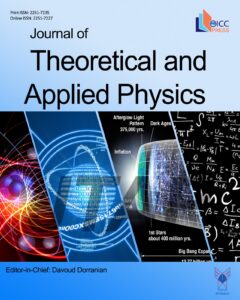Mixing rules and equation of effective permittivity of the medium having spherical inclusions in two different orientations of their basal planes for THz radiation emission
Authors
Abstract
In this study, we determine the effective permittivity of a medium in which spherical inclusions are embedded in a host medium whose permittivity is given by ε_h. It is interesting to note that the inclusions are made up of graphite and their basal planes are oriented in two configurations, 1) parallel and, 2) perpendicular to the direction of the electric field of incident electromagnetic field. The quasi-static approximation is valid in the present study, i.e. the wavelength of the incident field in the medium is much higher than the scale of inhomogeneities and the medium can be treated as a homogeneous one. An easy to use and advanced equation has been derived with the said configuration following the Maxwell Garnett approach used to evaluate the resultant permittivity of the medium. The effective permittivity of the medium is then analyzed on the basis of fractional volume f(ti ) of the inclusions in two different orientations along with two special cases when 1) f(ti )→1 and, 2) f(ti )→0. The role and nature of parallel and perpendicular orientations of basal planes on the effective permittivity is investigated. This method of calculating permittivity is useful for emission of THz radiation using laser-nanostructure interaction which is further helpful in the diagnosis and treatment of cancer diseases and in engineering fields related to material science.




